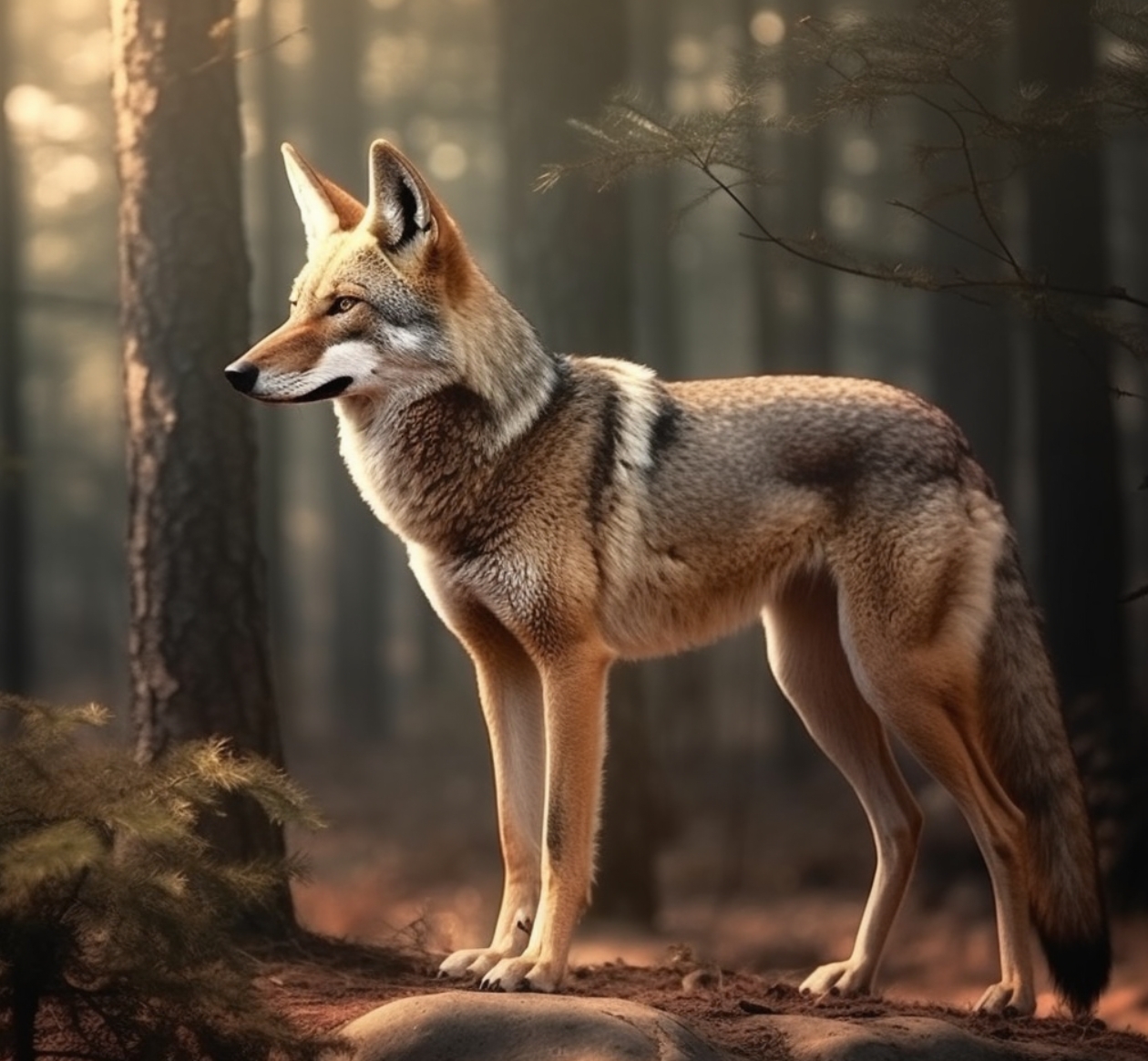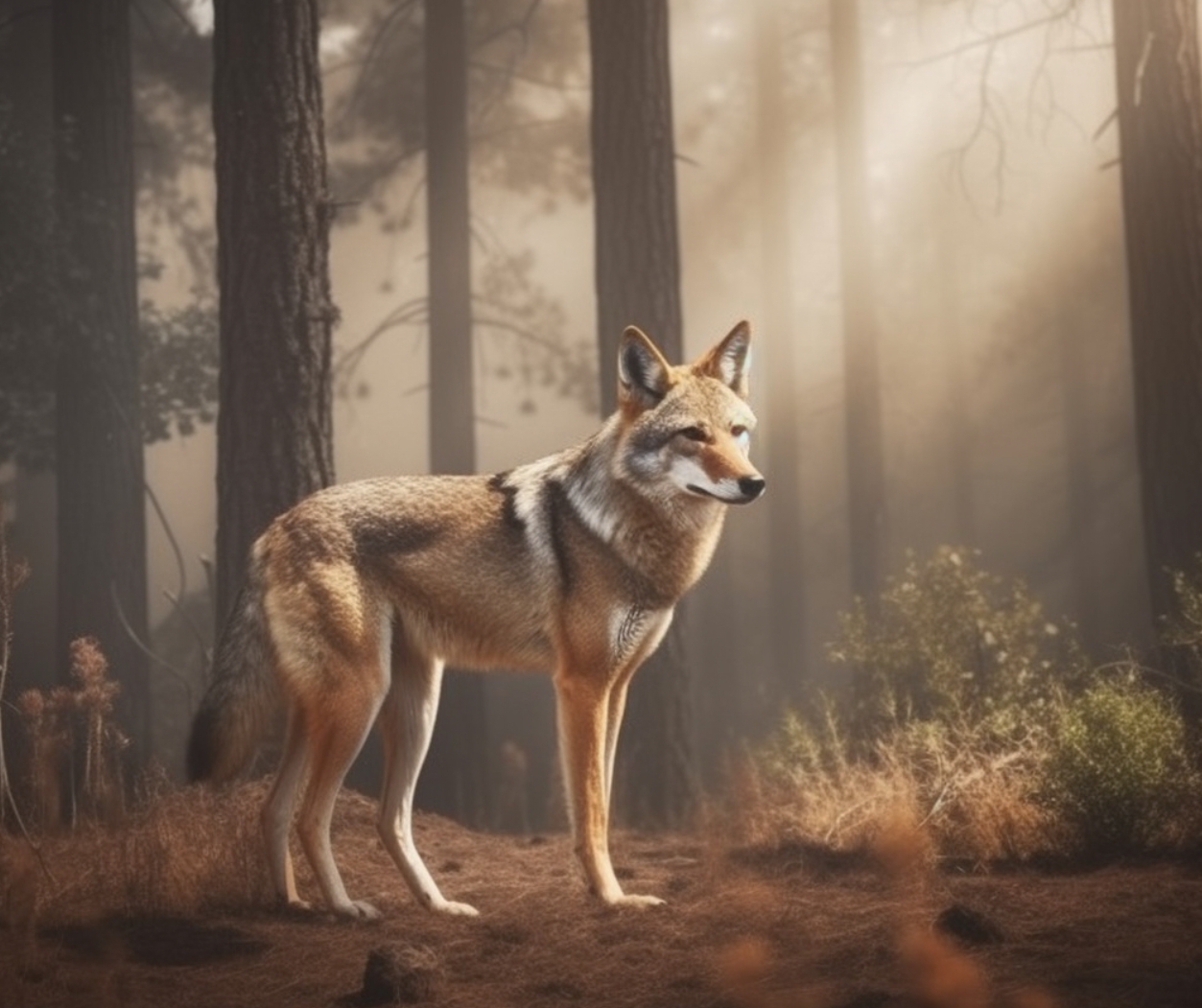Coyote hunting is becoming increasingly popular among outdoor enthusiasts, and for good reason. These cunning predators are a thrilling challenge, providing hunters with a unique experience. One of the most exciting aspects of hunting coyotes is calling them at night. In this comprehensive guide, we’ll cover everything you need to know about how to call coyotes at night, from the essential gear to the techniques that will help you be successful.
Gear Up for Nighttime Coyote Calling
Contents
Before we dive into the actual calling techniques, let’s go over the essential gear you’ll need for calling coyotes at night.
- Electronic or mouth calls: Choose a high-quality call from reputable brands like FOXPRO or Primos. Electronic calls are preferred by many hunters for their versatility and ease of use, but mouth calls can be effective as well.
- Lights or night vision: Visibility is crucial when hunting at night. Invest in a good quality spotlight, headlamp, or night vision scope to help you spot coyotes in the dark.
- Camo clothing: Blending in with your surroundings is key. Make sure to wear camouflage clothing and minimize any reflective or bright materials.
- Firearm: Choose a suitable firearm for coyote hunting, such as a .223 or .22-250 caliber rifle with a reliable scope.
Step-by-Step Guide to Calling Coyotes at Night
Now that you’re geared up, let’s dive into the actual process of calling coyotes at night. We’ll walk you through each step to ensure your nighttime hunting experience is a success.
Step 1: Scout Your Hunting Location
Before you start calling coyotes, it’s essential to scout your hunting location. Look for signs of coyote activity, such as tracks, scat, or vocalizations. Choose a spot with good visibility and make sure you’re downwind from where you expect the coyotes to approach.
Step 2: Set Up Your Stand
Once you’ve found the perfect spot, it’s time to set up your stand. This can be as simple as sitting on the ground with your back against a tree or using a portable hunting chair. Make sure you’re well-hidden and have a clear line of sight in the direction you expect the coyotes to come from.
Step 3: Start with a Subtle Call
When you’re ready to start calling, begin with a subtle call. Coyotes are wary animals, and starting with a loud or aggressive call may scare them away. Try using a distress call, such as a rabbit in distress or a fawn bleat, to pique their curiosity.
Step 4: Gradually Increase the Volume and Intensity
As you continue calling, gradually increase the volume and intensity of your calls. This will help create the illusion of a predator closing in on its prey. Be patient and give the coyotes time to respond. They may be more cautious at night, so it could take longer for them to come in.
Step 5: Mix in Coyote Vocalizations
In addition to distress calls, try mixing in some coyote vocalizations to add realism to your calling sequence. Coyote howls, yips, and barks can help to convince nearby coyotes that there’s another pack in their territory, which may entice them to investigate.
Step 6: Watch for Approaching Coyotes
As you continue your calling sequence, keep a close eye on your surroundings. Use your light or night vision equipment to scan the area for any signs of approaching coyotes. Be prepared to adjust your calling strategy based on their behavior. If they seem hesitant, try switching to a different call or lowering the volume to lure them in closer.
Step 7: Take Your Shot
When a coyote finally comes within range, it’s time to take your shot. Aim for the vital areas, such as the chest or neck, to ensure a quick and humane kill. Keep in mind that coyotes are fast and agile animals, so be prepared for them to change direction or speed suddenly. If you miss your first shot, don’t be discouraged – simply reset and try again.
Step 8: Follow Up on Your Shot
After taking your shot, it’s essential to follow up and make sure you’ve successfully taken down the coyote. If you’re not sure whether you’ve hit the animal, wait a few minutes and then carefully approach the area where you last saw it. Look for signs of a hit, such as blood or disturbed ground, and follow the trail if necessary. If you’re unable to locate the coyote, consider enlisting the help of a trained tracking dog.
Additional Tips for Calling Coyotes at Night
Here are a few more tips to help improve your nighttime coyote calling success:
- Practice your calling technique: The more you practice, the better you’ll become at mimicking the sounds that attract coyotes. Spend some time listening to real coyote vocalizations and distress calls to get a feel for how they should sound.
- Be patient: Coyotes are naturally cautious animals, and they may take longer to respond to your calls at night. Give them plenty of time to approach before moving on to a new location.
- Be aware of your scent: Coyotes have an excellent sense of smell, so do your best to minimize your scent by using scent-free soaps, detergents, and clothing.
- Stay safe: Hunting at night presents unique challenges, so always put safety first. Make sure you’re familiar with your equipment, wear appropriate clothing, and let someone know your hunting plans before heading out.
Conclusion
Learning how to call coyotes at night can be a thrilling and rewarding experience for hunters. By following our step-by-step guide, you’ll be well on your way to mastering this exciting hunting technique. Remember to be patient, practice your calling skills, and always prioritize safety. With a little perseverance and the right gear, you’ll soon be enjoying successful nighttime coyote hunts.
Frequently Asked Questions
What calls are best at night for coyotes?
At night, using a combination of distress calls and coyote vocalizations can be very effective. Distress calls, such as a rabbit in distress or a fawn bleat, can pique the curiosity of nearby coyotes. Mixing in coyote howls, yips, and barks can also help convince coyotes that there’s another pack in their territory, enticing them to investigate.
How do you call a coyote?
To call a coyote, you can use either mouth calls or electronic calls. Start with a subtle distress call and gradually increase the volume and intensity. Mix in coyote vocalizations to add realism to your calling sequence. Be patient and give the coyotes time to respond.
What time of night are coyotes most active?
Coyotes are most active during the early evening and early morning hours, but they can also be active throughout the night. Their activity levels can vary depending on factors such as weather, food availability, and human presence in the area.
What scent attracts coyotes?
Coyotes are attracted to a variety of scents, including the smell of potential prey, such as rabbits or deer, as well as the scent of other coyotes. Using scent lures, such as predator urine or gland lures, can help to draw coyotes in closer to your hunting location.
What sound attracts coyotes the most?
Distress calls from prey animals, such as rabbits or fawns, are very effective at attracting coyotes. These sounds trigger the coyote’s predatory instincts and can bring them in close for a closer look. Additionally, coyote vocalizations can help to convince nearby coyotes that there’s another pack in their territory, which may entice them to investigate.
How far can a coyote hear?
Coyotes have an exceptional sense of hearing and can detect sounds from up to a mile away, depending on the terrain and ambient noise levels. This makes using calls an effective way to lure them in from a distance.
How do Native Americans say coyote?
The word “coyote” comes from the Nahuatl word “coyotl,” which is pronounced as “coy-oh-tl.” Native American tribes have various names for the coyote, depending on their specific language and cultural traditions.
What is the best time to call coyotes?
Coyotes can be called at any time of day, but many hunters find the early morning and late evening hours to be the most productive. During these times, coyotes are often on the move, searching for food or defending their territory, making them more likely to respond to calls.
What time of year are coyotes most aggressive?
Coyotes tend to be more aggressive during their breeding season, which typically occurs from January to March. During this time, they may be more territorial and protective of their mates or pups. Additionally, coyotes can become more aggressive when food sources are scarce, such as during the late fall and early winter months.





